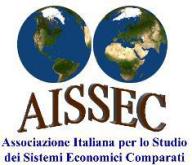Edited by Luca Bortolotti, University of Turin and OEET
The breakout of the COVID-19 has caused dramatic health and economic consequences worldwide. The severity of the contagion and the resources and policies employed to tackle the virus are different across the globe, therefore determining heterogeneous outcomes. Although the poorest countries and emerging economies are not amongst those most affected in terms of (reported) victims, the economic consequences appear severe, especially considering the areas and sectors more integrated in the global value chains and world economy. The measures implemented in the advanced economies - lockdowns and social distancing - can have negative consequences also in these economies, reducing the Foreign Direct Investments, but also the official and private aid, the international demand for raw materials, and the remittances of migrants. Moreover, the pandemic context risks to exacerbate the vulnerabilities that characterize these countries, such as a dualist structure, the inequality of income and consumption and the narrowness of the public finances.
Newsletter n. 18| April 2021 - Download PDF
This newsletter wants to provide a picture of the economic impacts of the COVID crisis on the emerging economies, underlining the heterogeneities across countries, sectors, and social groups in order to identify the most vulnerable subjects and indicate adequate countermeasures. The effects of the pandemic in the short- and medium-run development of the emerging economies is drawing the attention of several economists. OEET newsletter 16 was about “COVID-19, Development Perspectives and Inequalities”, and this topic was further explored during the 6th OEET workshop held in December 2020, about “Emerging economies during and beyond the Covid crisis: insights and perspectives”. This newsletter contains three contributions presented in that occasion, exploring the impact of the crisis focusing on the economic aspects. Such impacts involve a variety of micro- and macroeconomic aspects, such as international trade, labour market, redistribution and fiscal policies. The contributions of this newsletter are selected with the purpose of reflecting such an articulated impact, providing thus a timely and comprehensive picture. On the one hand, the geographic focus involves different world regions, namely Sub-Saharan Africa, India, and Arab countries. On the other hand, methodologically a variety of analytic tools and data sources are adopted. Indeed, after more than one year since the outbreak of the crisis and the declaration of the pandemic by the World Health Organization in March 2020,[1] we can now rely on different datasets to observe the dramatic economic consequences of this emergency burdening the emerging economies. A timely understanding of the COVID impact in the emerging economies is fundamental to foresee what medium-term consequences will thwart development in the next years and which policies can better address this.
The first article, by Carlo Sdralevich, focuses on the poorest region of the world: Sub-Saharan countries. The impact of the pandemic and perspective of recovery are described based on the IMF data. The narrow space for social protection and other countercyclical policies represents a binding constraint for the governments of these countries. In order to address this limitation and foster the recovery of Sub-Saharan Africa, besides the international financial support, Sdralevich advocates various transformative reforms. Such reforms should address problems that have affected Sub-Saharan countries for a long time, and the urgency to foster the recovery could represent an opportunity to put in place these measures.
The second article, by Maurizio Bussolo, compares the reaction to the crisis amongst formal and informal workers. The case study is India, where the problem of informality is endemic. Econometric tools allows to monitor over time the risk of unemployment and the income loss in different groups of workers (formal, informal and self-employed). While informal workers were disproportionally affected in the earlier phase of the COVID outbreak, the crisis later hit more severely the formal workers. Indeed, a consistent flow of individuals from formal to informal works (besides an overall increase of unemployment) indicates a deterioration of Indian labour market during the last year.
The third article, by Velia Bigi, Elena Perra and Giorgia Giovannetti, adopts satellite data to describe the economic and environmental performance of Arab countries during the pandemic. The authors measure the difference before and after the COVID-related containment policy in the recorded nightlights and nitrogen dioxide data. These data are provided timely and correspond to extremely precise geographic units, representing therefore important sources for the economic analysis. All the countries considered - the southern shore of the Mediterranean - result negatively affected by the pandemic, but the magnitude of the impact varies a lot within the countries, especially hitting touristic destinations and large cities.









